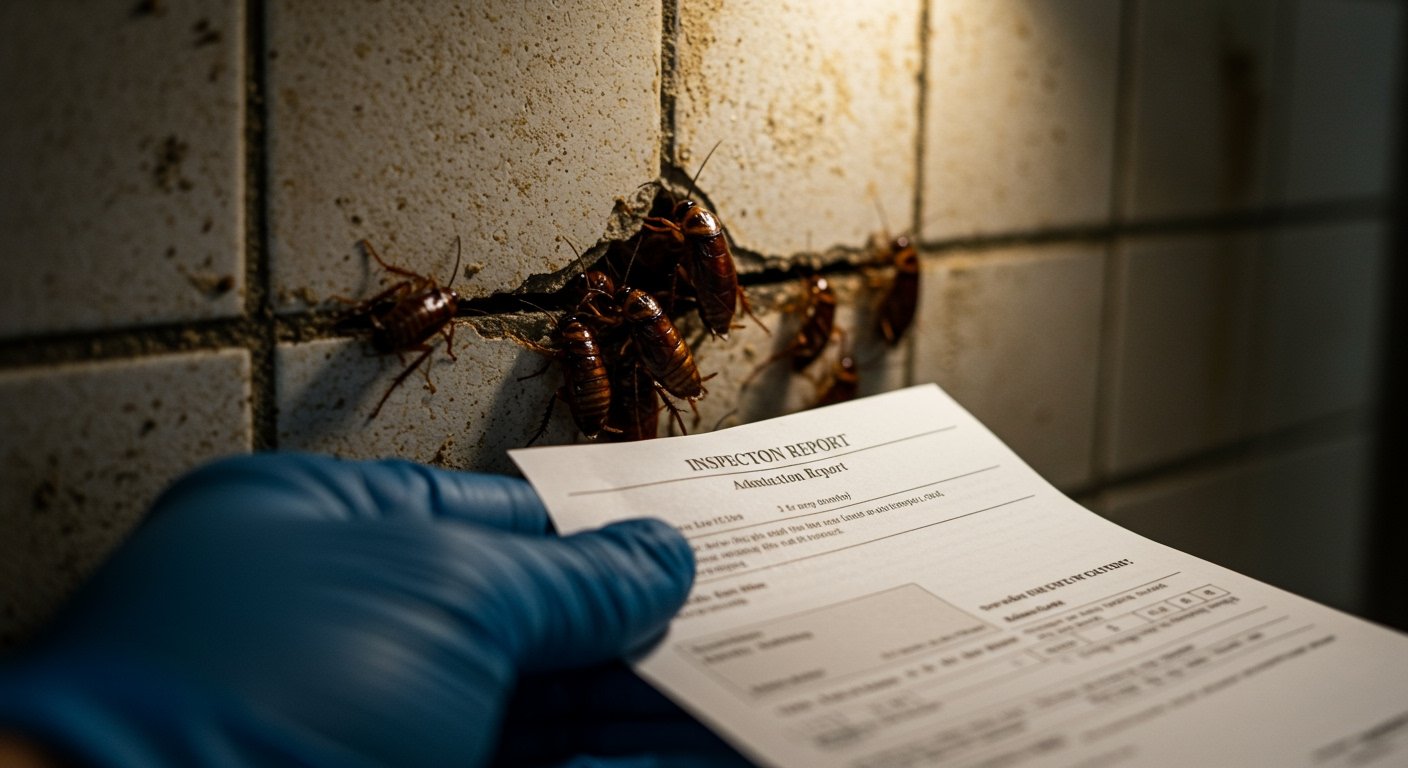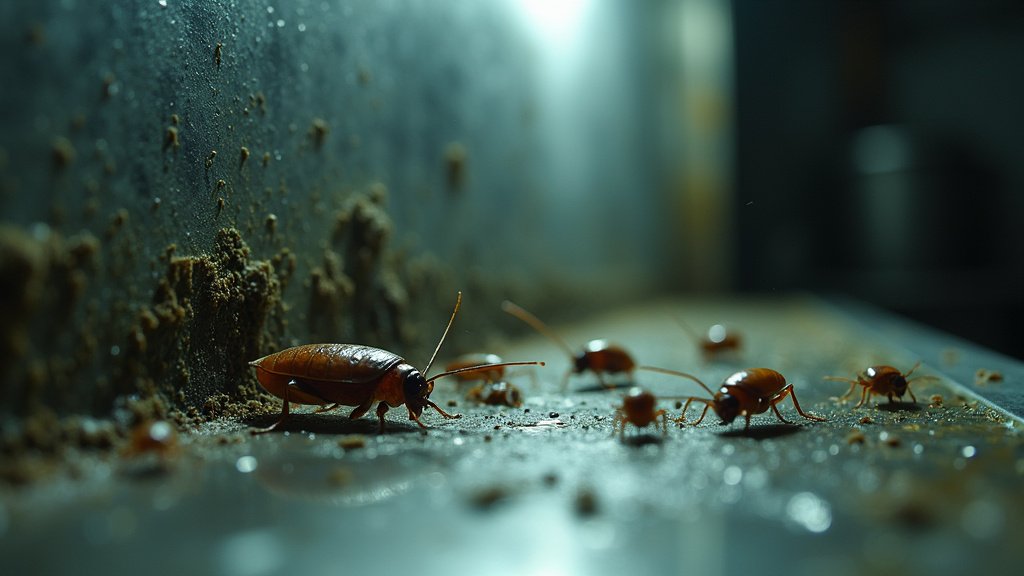CORAL GABLES – A restaurant in the affluent community of Coral Gables has been ordered to cease operations following a detailed inspection by health authorities that uncovered significant food safety violations. Among the critical issues cited by inspectors was the observation of a severe pest problem, specifically reports of roaches emerging from the establishment’s walls. This singular observation, combined with other documented infractions, led regulators to determine the premises posed an immediate risk to public health, necessitating the closure.
Inspection Findings Detailed
Official records from the inspection, documented in reports [7, 10], paint a concerning picture of the conditions discovered within the establishment. The presence of pests, particularly roaches observed emerging directly from structural elements like walls, is typically categorized as a high-priority violation during health inspections. This is due to the significant risk of food contamination, spread of pathogens, and transmission of disease associated with pest infestations in food preparation and dining areas. Inspectors meticulously documented these sightings as a key component of the formal report that triggered the regulatory action. The specific nature of the infestation, described as pests actively emerging from walls, suggests a potentially widespread and deeply embedded problem extending beyond easily addressable surface issues, indicating a systemic failure in pest control and sanitation.
Broader Sanitation Concerns
Beyond the prominent pest issue, the inspection reports [7] also detailed the presence of other food safety issues that contributed significantly to the decision to close the restaurant. While specific details of these additional violations were not enumerated beyond being categorized as “other food safety issues” in the provided summary, such infractions in regulatory contexts typically point to broader systemic problems within an establishment’s operations. These can include deficiencies across areas like proper cold or hot holding temperatures for potentially hazardous foods, inadequate procedures for preventing cross-contamination between raw and cooked items, unsanitary conditions of equipment and food contact surfaces, improper storage methods, and lapses in employee health and hygiene practices. The documentation of these related infractions, alongside the severe pest infestation, indicated to inspectors that the non-compliance was not isolated but reflective of deeper issues concerning the restaurant’s adherence to fundamental public health protocols. The cumulative risk posed by multiple types of violations, especially when one involves active pest activity, strengthens the rationale for an immediate closure to prevent potential widespread illness among patrons and staff.
The Process of Closure
Health departments are empowered by law to conduct inspections of food service establishments to ensure compliance with state and local health codes designed to protect the public. These inspections can be routine, triggered by specific complaints from the public or former employees, or follow-ups to previous violations to ensure corrective action has been taken. When conditions are found that constitute an imminent hazard to public health – such as active pest infestations that cannot be immediately controlled, significant temperature abuse putting food in the “danger zone” for bacterial growth, or sewage backups – inspectors have the immediate authority to order an emergency closure of the facility. This drastic measure is not taken lightly but is deemed necessary to protect the public from potential foodborne illnesses that could result from consuming food prepared in or served from unsanitary or unsafe environments. The closure in Coral Gables resulted directly from the findings documented by the inspectors, indicating the severity of the observed violations met this threshold, presenting an unacceptable risk to public health that required immediate cessation of operations.
Path to Reopening
For a restaurant ordered closed due to health violations, the path to reopening is strictly contingent upon swift and comprehensive corrective action, verified by the regulatory authority. The establishment is typically required to address all violations cited in the inspection report, not just the most critical ones. This involves not only rectifying immediate issues like thorough pest eradication by licensed professionals, extensive cleaning and sanitization of all areas, and proper disposal of potentially contaminated food but also implementing preventative measures and providing adequate training to staff to ensure future compliance with health codes. Once the restaurant’s management is confident that all violations have been fully corrected and the premises meet all necessary standards, they must formally request a re-inspection by the health authorities. The restaurant will only be permitted to resume operations after a follow-up inspection confirms that all critical violations have been resolved and the establishment demonstrably meets regulatory standards for safe food handling and preparation. The timeline for this process varies significantly depending on the severity and scope of the original issues and the speed, thoroughness, and effectiveness of the restaurant’s response in implementing lasting corrective measures.
Significance for Public Health
The closure of a restaurant due to severe health code violations, particularly those involving active pest infestation and other critical sanitation lapses, serves as a potent illustration of the public health risks inherent in the food service industry when regulations are not strictly followed. Establishments serving the public bear a significant responsibility to maintain hygienic conditions and adhere to regulations designed to prevent the spread of pathogens. Pests like roaches are well-known vectors for transmitting a variety of dangerous pathogens, including bacteria that cause salmonellosis, staph infections, and E. coli, by tracking contaminants across surfaces, equipment, and food items. Similarly, violations related to temperature control or cross-contamination can lead to rapid bacterial proliferation in food, resulting in severe foodborne illnesses for consumers. For vulnerable populations, including the elderly, young children, and individuals with compromised immune systems, exposure to contaminated food can be particularly dangerous, potentially leading to severe health outcomes or even fatalities. Regulatory bodies, through consistent inspections and decisive enforcement actions like closures, play an indispensable role in mitigating these risks and maintaining public trust in the safety of dining out. The incident in Coral Gables highlights the ongoing need for vigilance within the food service industry regarding sanitation and pest control, and underscores the critical function of effective oversight by public health officials in safeguarding the community’s health.
Conclusion
The temporary shuttering of the Coral Gables eatery due to documented severe health and sanitation violations, including the concerning observation of pests emerging from the structure itself, underscores the non-negotiable nature of food safety standards. As the restaurant works towards comprehensively addressing the documented issues and demonstrating full compliance with health codes to regulatory authorities, the incident serves as a public affirmation of the regulatory system’s vital role in protecting consumers by ensuring that dining establishments meet fundamental health and safety requirements necessary to prevent foodborne illness and ensure public welfare. The focus now shifts to the establishment’s remediation efforts and subsequent inspections that will determine its future.





